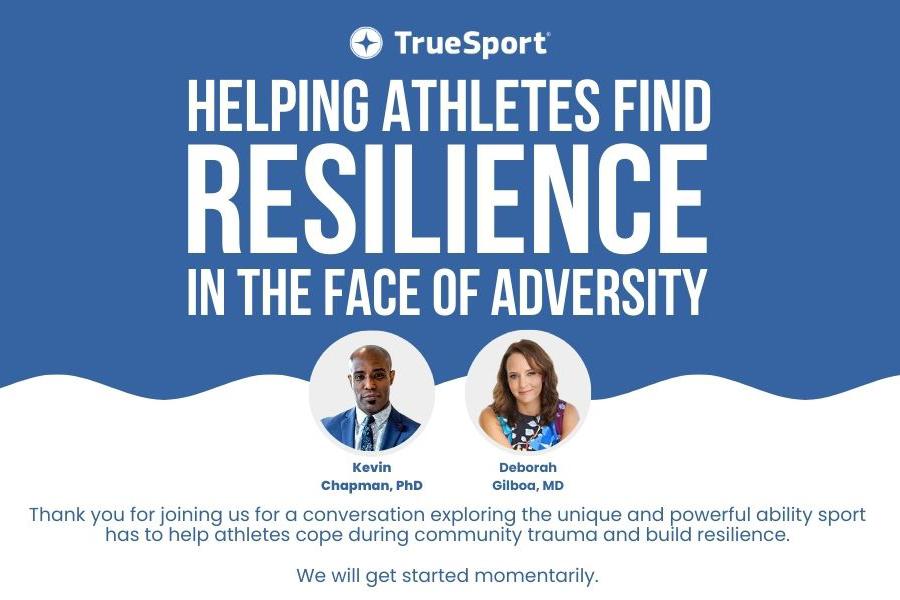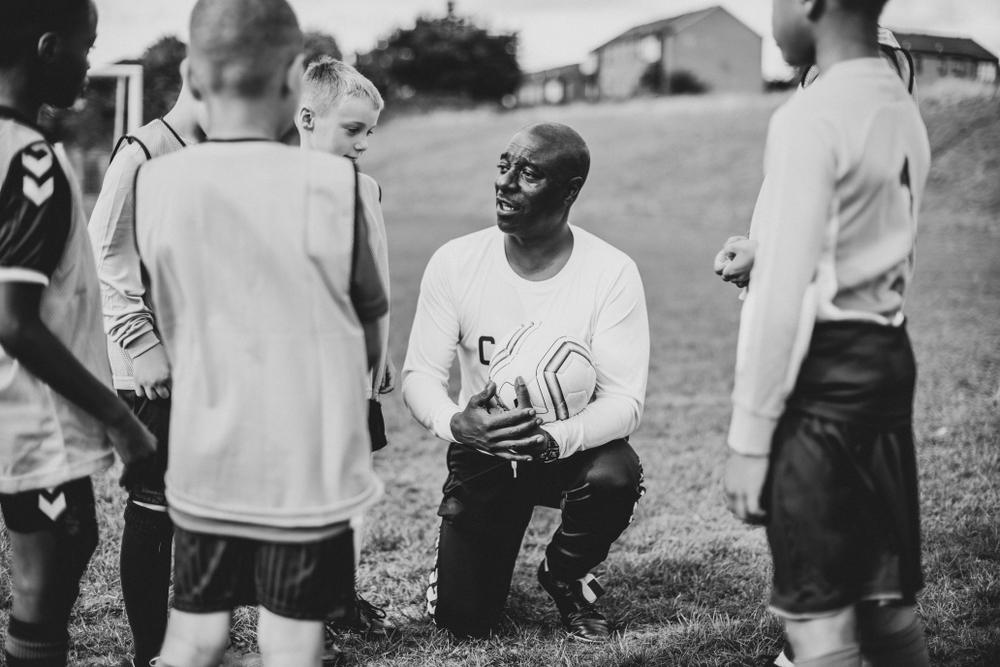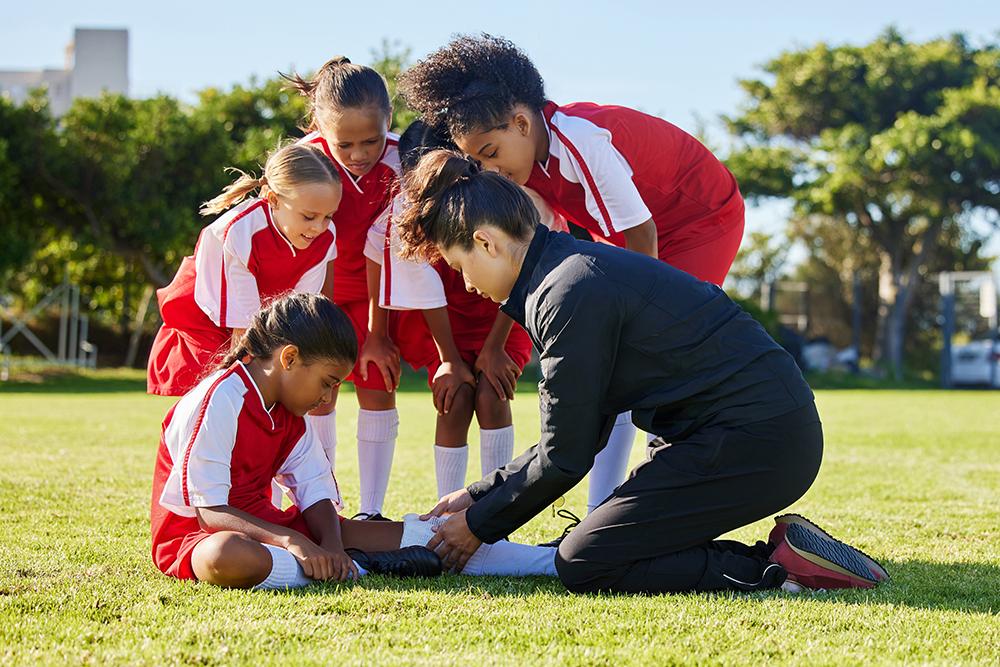 Building your resilience in the face of adversity is an important part of developing as an athlete and as a human. Passing that knowledge and these practices on to your teammates can also help the team navigate tough moments and get through challenging situations!
Building your resilience in the face of adversity is an important part of developing as an athlete and as a human. Passing that knowledge and these practices on to your teammates can also help the team navigate tough moments and get through challenging situations!
Here, board-certified family physician and TrueSport Expert Deborah Gilboa, MD, explains how to improve your own resilience and practice resilience as a team.
1. Resilience isn’t a static trait
There’s good news and bad news: Resilience—the ability to bounce back from something and adapt to change—isn’t something that you’re born with, or something that you naturally will or won’t have in every situation. It’s a moving target. “Resilience is something that goes up and down in different situations,” says Gilboa. “You may adapt to change really well overall, and then you get to practice one day and for some reason, every little thing is setting you off. This doesn’t mean you aren’t inherently a resilient person. It just means something is draining your resilience.”
2. Frame what’s happening around you
Resilience is built on how we perceive the world around us, which is our outlook. “Outlook directly impacts our resilience, because our outlook is the story we tell ourselves about what’s happening to us,” says Gilboa. “The first part of building resilience is understanding how we frame what we’re going through.” This doesn’t mean reframing absolutely everything in your life as opportunities or positive situations, but it does mean being able to understand your emotions, zoom in on what’s within your control, and look for opportunities whenever possible.
3. It’s OK to feel upset
 Resilience and finding opportunities in tough times can often be associated with being an optimist or always being positive—sometimes to the point of toxic positivity. But Gilboa says that having resilience means first recognizing, acknowledging, and legitimizing your emotions, even the negative ones. “You don’t need to be relentlessly positive about everything in your life to be resilient,” she says. “First, acknowledge how you actually feel in a situation. There are benefits to saying to yourself, ‘I don’t like this. That was embarrassing, and I’m angry about that.’ It’s reasonable to feel that way and your emotions are legitimate.”
Resilience and finding opportunities in tough times can often be associated with being an optimist or always being positive—sometimes to the point of toxic positivity. But Gilboa says that having resilience means first recognizing, acknowledging, and legitimizing your emotions, even the negative ones. “You don’t need to be relentlessly positive about everything in your life to be resilient,” she says. “First, acknowledge how you actually feel in a situation. There are benefits to saying to yourself, ‘I don’t like this. That was embarrassing, and I’m angry about that.’ It’s reasonable to feel that way and your emotions are legitimate.”
4. Manage your emotions
“When you ignore or repress your emotions, you cause your body and your brain harm,” says Gilboa. “Being able to acknowledge and then manage your emotions will make you stronger. If you try to repress that negative emotion rather than working through it, you’ll end up with a stream of negative self-talk, and it will be hard for you to consider a different narrative. Owning your emotion allows you to manage it and move through it.”
5. Understand what’s in your control
 There are three things you can always control no matter what situation arises, says Gilboa. These three things are your attitude, behavior, and purpose. As students, it’s easy to feel like nothing is within your control. And that’s understandable because often, a lot of things really are outside of your control, so it’s easy to feel like nothing is within your control. “However, you are not what happens to you. You are judged by who you are in the face of what happens to you,” says Gilboa. “What you can control is your behavior in a situation, how your attitude appears to others, and what your purpose is in any given situation. Recognize the power of choosing behavior, attitude, and purpose at any moment.”
There are three things you can always control no matter what situation arises, says Gilboa. These three things are your attitude, behavior, and purpose. As students, it’s easy to feel like nothing is within your control. And that’s understandable because often, a lot of things really are outside of your control, so it’s easy to feel like nothing is within your control. “However, you are not what happens to you. You are judged by who you are in the face of what happens to you,” says Gilboa. “What you can control is your behavior in a situation, how your attitude appears to others, and what your purpose is in any given situation. Recognize the power of choosing behavior, attitude, and purpose at any moment.”
6. Your attitude is not your emotion
While it’s important to feel your emotions and acknowledge them, your attitude doesn’t necessarily have to reflect the emotions you may be feeling. “Your attitude is how you choose to show your emotions on the outside,” says Gilboa. “You use your face, your tone of voice, and your body language to define your attitude towards something. You can’t—and shouldn’t—control your emotions, but you can control how you express them. So there is a big difference between having a coach say something that frustrates you, and letting that frustration manifest in your attitude.”
7. Question everything
As you focus only on things that you can control, you can still fall into the mindset that any situation is entirely out of your control. “If the star player on your team is injured, the story that you might tell yourself is, ‘Nothing I do makes any difference because we’re not going to win this game,’” says Gilboa. “Instead, look for parts of the situation that you can control—your behavior, attitude, and purpose. Ask yourself, ‘How can I make sure we have the best game possible without that player, and what can I do to stand out?’”
8. Practice switching emotions
“One of the most useful exercises to build resilience is to challenge yourself to turn one frustration a day into an opportunity,” says Gilboa. This is flexing your resiliency muscle. “When you have a negative sentiment, first let yourself feel your emotions and name them, and then look for one opportunity.” It doesn’t have to be big: Channel your irritation over a friend not calling you back into an opportunity by using that time to have a long conversation with a sibling or parent.
9. Ask for what you need
Part of resilience is learning to understand not just your emotions, but also what you need from others in any given moment and how to ask for it. Maybe a parent, coach, or peer is great about asking if you need advice or a sounding board, or maybe they’re always quick to offer advice you definitely didn’t ask for. If the latter is true, Gilboa says that it’s okay to start a conversation by telling someone what you need from them, whether it’s just a shoulder to cry on, some words of wisdom, or some actual help with a problem.
10. Bring resilience to your team with questions
 “If you want to step up and try to be a leader in a challenging situation with your team, lead with empathy and then ask good questions,” says Gilboa. “Asking questions improves people’s resilience because it helps them see that there’s more than one way to navigate a change.” Don’t start the conversation by telling the team what they need to do. Instead, ask for input and work together to create a new plan.
“If you want to step up and try to be a leader in a challenging situation with your team, lead with empathy and then ask good questions,” says Gilboa. “Asking questions improves people’s resilience because it helps them see that there’s more than one way to navigate a change.” Don’t start the conversation by telling the team what they need to do. Instead, ask for input and work together to create a new plan.
She suggests questions like:
- What else can we do to reach our mission if your Plan A is no longer an option?
- What’s the reputation we’re trying to build?
- What can we control?
As you help lead your team through a tough time, the last thing to remember is that, as with your own practice of resilience, feelings and initial emotions matter. It’s unrealistic to force team members to instantly shift from a big challenge into seeing it as a positive. Because of that, Gilboa suggests setting a timer—seriously, set a timer for five minutes—and in that time, allow your teammates to share their current emotions about a tough situation. “Once the timer goes off, that’s it,” says Gilboa. “The team is done with the negative story, and now it’s time to figure out how to write a different story.”
_______________________
Takeaway
Resilience—the ability to bounce back from a challenge—is important for you and for your team to succeed on and off the field. Start by focusing on what you can control: Your behavior, attitude, and purpose. From there, learn to frame challenges in a more useful way while still giving yourself space to feel your emotions. Bring these practices to your team to help them through tough moments with more solution-oriented thinking.



